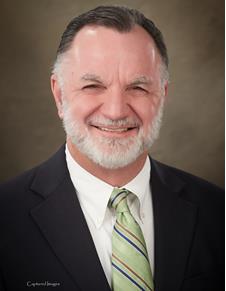Money Flow
In my last column, I compared the total business payrolls of Bourbon County to that of two of the most relatable counties in Southeast Kansas: Allen and Neosho. While payrolls are a strong indication of the vitality of business activity in a jurisdiction, one can also look at the flow of money into a community to gauge the strength of that activity and future prospects. As the saying goes, “It takes money to make money.” While that it is not an absolute, it certainly holds true much of the time. Accordingly, let us take a look at the flow of money into these three counties over the last few years.
One way to understand how much money is being created in a community is to look at the lending activity to small businesses; almost all of our Southeast Kansas businesses fit that definition. Here is a chart of total small business loans outstanding in each county and the average loan size at origination:
2015 2019
| County | # Loans | Ave. Loan Size | # Loans | Ave. Loan Size | 2020 Pop. |
| Allen | 144 | $44,785 | 129 | $34,264 | 12,526 |
| Bourbon | 100 | $27,452 | 133 | $41,571 | 14,360 |
| Neosho | 121 | $13,661 | 128 | $19,828 | 15,904 |
As you can see, over the five years considered, Bourbon County has grown their small business community when measured by lending activity. Each of these loans puts additional money in circulation in a community and helps fuel future economic activity.
How has that translated into the money supply in our community? One way to evaluate that is to look at total deposits in the county financial institutions. Here is how the banks in the three counties compare in recent years:
2019 2020
| County | Institutions | Deposits | Institutions | Deposits |
| Allen | 5 | $292 million | 5 | $357 million |
| Bourbon | 6 | $254 million | 6 | $277 million |
| Neosho | 7 | $394 million | 7 | $453 million |
Allen and Neosho lending institutions and investors have millions of dollars more to place in future business activity than Bourbon County, and their deposits grew by 22% and 15%, respectively, compared to 9% for Bourbon County. Part of the explanation of the dramatic one-year growth in all three counties are government programs rolled out during the pandemic, such as the Payroll Protection Program, which injected millions of dollars into small businesses across the country. The real question is whether these businesses invested in payroll and business activity, or paid off bank loans and stuck the rest into their deposit accounts. Considering our increase in lending activity and smaller deposit growth, it looks as if more of this kind of government money went to work in Bourbon County small businesses than that of the other two counties.
All indications are that the small businesses in Bourbon County are holding their own, and increasing their economic activity relative to our two similar neighbors. Bourbon County REDI encourages you to support your local small businesses by shopping local and paying your sales tax in Bourbon County. Let us all help the vitality of our small business community when possible.

Is there a source to find out how many businesses in total there are in Bourbon County? And then break that down to small businesses? I see in the paper where several businesses are being started in downtown, in Fort Scott, and the county. That’s a big plus for the area.
Rick, try the Kansas Statistical Abstract 2020. I have done some searching for the information (not exhaustive), but cannot find a place where it is aggregated. Private businesses can take the form of corporations, partnership, sole proprietors, etc., so it is hard to be definitive. Also, the definition of “small business” is in the eye of the beholder. When thinking nationally, all of our businesses are small.
If the Paycheck Protection Program (PPP) loans were used for any other purpose than providing a paycheck; isn’t that fraud? How many PPP loans were made to entities that didn’t even have a payroll/paycheck to protect? Since PPP loans were administered by banks through the Small Business Administration, how much “due diligence” was done to open then forgive those loans by banking institutions? One Bourbon County KS recipient of $20,000 in a PPP loan (not processed through a local bank) has just changed address to the Kansas Department of Corrections.
Banks were not required to perform due diligence; rather, the SBA specified what records were required to apply and what records were required for forgiveness. Banks were simply the middleman. As with most government programs, much fraud and abuse takes place, especially those hastily drafted such as PPP loans. SBA had no capacity to roll out or administer the program, much less monitor fraud.
Additionally, some overhead expenses were also allowed.